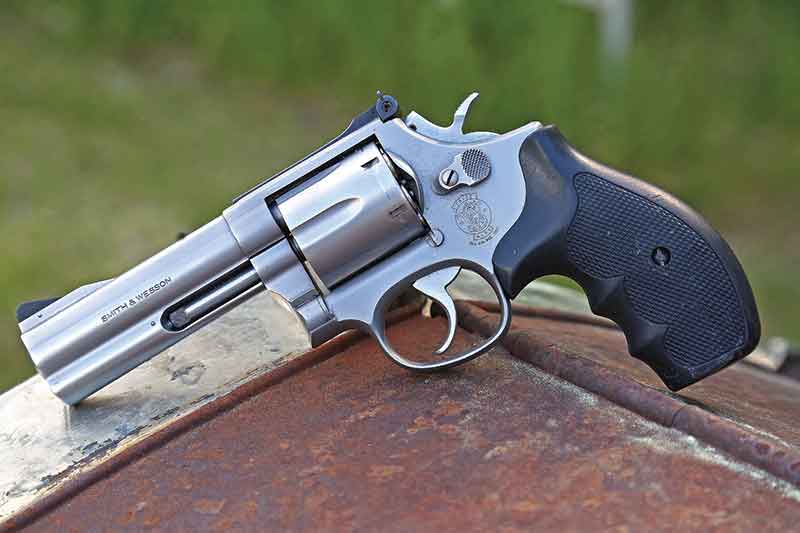Dave? Wishy-Washy?
Well... Maybe... Or Not?
“You know what your problem is?” my buddy asked. “You’re wishy-washy. You’re too quick to see the other side of every issue.”
“Well, you could be right…”
“I am right,” he continued, “You’re always saying ‘mostly’ this or ‘generally’ that or maybe ‘try’ such and such technique.”
“Readers like big, bold, positive statements,” he went on, “Articles like ‘1911’s are obsolete’ or ‘Competition Shooting will get you killed!’”
“But none of those things are true.” I said, “Though I suppose you could make an argument …”
“You see, you’re doing it again. Be controversial, man! Repeat after me — the .380 is utterly useless!”
“I wouldn’t say useless, exactly…”
“With modern loads the 9mm is the perfect defensive cartridge!”
“Well, they’re better, certainly, but…”
“Single-action revolvers are for grown-up kids still playing cowboy!”
“Surely you can’t be serious.”
“I’m being controversial. And don’t call me Shirley. Write about something you like, only don’t say it’s really good, say it’s the best.”
The Best Revolver Ever Made
Okay. I’ll try it one time. The S&W L-Frame model 686 is the best revolver ever made. It’s accurate. It’s versatile. It’s reliable. It’s built the way the Romans used to build stone bridges. Every handgunner should have one. There.
The L-Frame appeared in 1980, just as the illustrious era of the police duty revolver was drawing to a close. What began as a trickle of high capacity semiauto duty pistols became a raging flood. By the 1990’s the transition was complete.
Like a candle burning brightest just before it goes out, the L-Frame was the last and best duty revolver. The K-Frame revolver, the police standard for so many years, was a .38 adapted to accept .357 Magnum loads. The concept was to do most shooting with .38 Specials, reserving full power .357 loads for sighting in and occasional familiarization sessions.
By the 1970’s it was policy to “train with what you carry.” Around the same time, hot 125-gr. JHPs became the load of choice. In a light K-Frame such as the popular models 13 and 65, such loads were hard on guns, and hard on shooters.
The L-frame was designed and built to handle .357 Magnum loads. The earlier N-Frames, of course, could handle full power loads, but the grip frame feels big in even average-sized hands. For those with smaller hands it’s like gripping a bat by the wrong end. The K- and L-Frame revolvers have the same size grip frame.
The added weight, muzzle-forward balance, and adjustable sights made the 686 a fine performer on the range. Only a small percentage of officers are PPC competitors, but they shoot a lot, are often firearms instructors, and their opinions and example influence others. In distinguished revolver or in stock service revolver divisions, or as the base for a full-house competition, the L-Frame proved a sound choice.
Simplicity And Reliability
Its days as a duty sidearm may be past, but the L-Frame remains popular. Checking the S&W website I counted 17 variations of the 686 (and the blued carbon steel 586) in both 6- and 7-shot versions. Depending on personal preference, a 4″ or 6″ barreled 586 or 686 is more than just a great revolver, it’s a fine all-around handgun.
It will function with everything from target wadcutters to full power .357 Magnums. Target wadcutters recoil hardly any more than .22’s, and these days, may be even easier to obtain. At the other end of the scale, 125-gr. JHP .357 Magnums have a sterling reputation as personal defense loads.
Durability? Nothing lasts forever but even with .357 Magnum loads, the shooter will likely wear out before the gun does.
Simplicity and reliability: Many owners see a handgun as a tool, like a power saw or a lawnmower. They like the ease of loading and unloading of revolvers, and the point gun/pull trigger simplicity.
About the only thing an L-Frame doesn’t do well is concealed carry, though it can be done. For home or business defense, range shooting and target competition, small to medium game hunting, with loads from feeble to ferocious, the 686 will serve you well.
My buddy read through the first draft. “See how easy it is? Doesn’t it feel good to be bold, not a spineless squish?”
“Yeah, I guess,” I replied. “Although a Ruger GP100 would do just as well …”
“Aaarrrgh! You’re hopeless!”
What can I say? I yam what I yam and that’s all what I yam.






